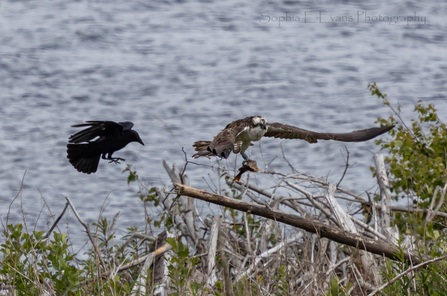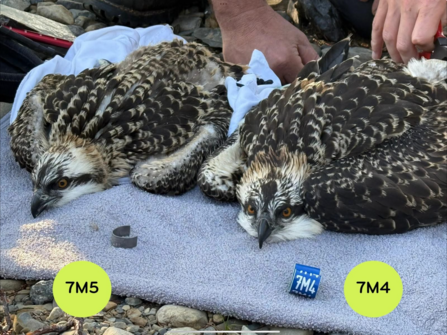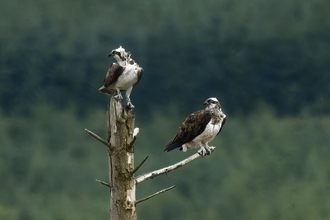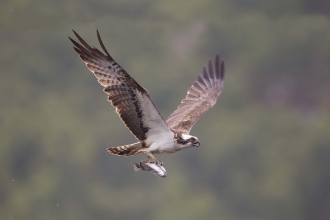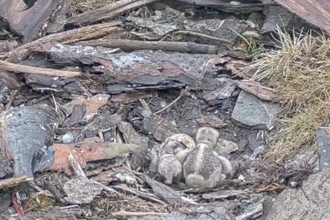Two hungry chicks require a lot of fish!
The first chick of the 2025 season, affectionately known by all of us volunteers as 'Bob1', arrived on 2nd June and, three days later, she was joined by a second chick, 'Bob2' (male) on 5th June. LJ2 (adult male) immediately sprang into fishing mode and was bringing in more fish, mainly jack pike initially. 372 (adult female) was taking the fish and feeding the chicks. At first Bob1 seemed to be getting most of the feed and Bob2 getting very little and we felt a little concerned that he may not be getting enough; he seemed quite weak and not getting his fair share. However, after a few days, he managed to push his way to the front and started getting a full feed; from that point on both chicks seemed well.
Osprey chicks, after 7-10 days, enter into a growth spurt, which lasts for around two weeks, and during this period they grow and develop at a remarkable rate.


